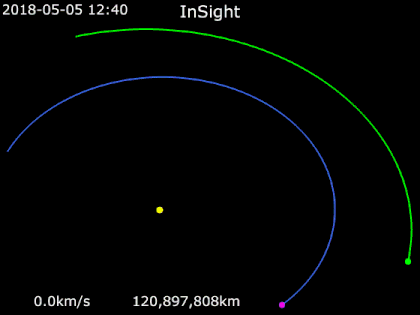We have been excitedly following the Artemis 1 mission as NASA prepares to send humans back to the moon. That coupled with all the SpaceX launches we’ve watched led Elijah to ask how launch windows are calculated. Instead of guessing at the rough idea, it seemed like a good opportunity to learn something.
For something like a trip to Mars, it seems more obvious why there would be a launch window. If the two planets are on opposite sides of the sun, the trip would take much longer than if the two planets are close together. JPL has page that explains this and here’s an animation from the Wikipedia entry for “launch window.” In this example, earth is blue, Mars is green, and the Mars lander “InSight” is purple. The timing of the launch is critical to get the correct trajectory to Mars and the launch window only opens every 26 months.

(Side note: InSight has been collecting data on Mars for four years and we’re within days/weeks of the mission ending. The solar panels have gotten so covered in dust over the years that it barely has enough power to even communicate with the orbiting satellites. You can read more about the end of life preparations on the NASA site.)
But what about launching to low earth orbit? It turns out there are a lot of factors which are listed in an article from Kennedy Space Center:
- When meeting up with an object like the space station or aiming for launching a satellite in a specific spot, the timing is important for the same reasons as described above.
- Atmospheric conditions (e.g. wind and temperature) can impact the performance of the rocket and how much fuel will be burned.
- Launching a few minutes early/late can require extra fuel to adjust the trajectory. How much extra fuel is available when the other factors are taken into account?
- Collision avoidance is included to give the rocket the best chance of reaching its goal without hitting any space debris.
All these factors (and more) need to be analyzed for all possible launch times within the window to ensure mission success. Loading more fuel on board might be one way to expand the launch window, but that can have other effects on the mission. Everything has to be balanced for success.
